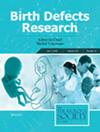Situs inversus totalis (SIT) is present in approximately 40%–50% of patients with primary ciliary dyskinesia (PCD). We evaluated the relationships between novel genetic results and the clinical and radiological characteristics of PCD patients with SIT.
The study included 48 patients diagnosed with PCD and SIT. Demographic and clinical features, disease-related scores (Bhalla, Primary Ciliary Dyskinesia Rule [PICADAR], and American Thoracic Society [ATS]), and genetic analyses were retrospectively assessed.
The median age of patients was 13 (6.5–16) years, and parental consanguinity was observed in 43 (89.58%) patients. Bhalla score was available in 31 patients and “moderate and severe” score was observed in 19 (61.29%) patients. The median PICADAR score was 10 (8–11), and 34 (70.83%) patients had a high (≥ 10) PICADAR score. The ATS score was found to be 4 in 24 (50%) patients and 3 in 20 (43.75%) patients. Genetic data were available in 40 patients and mutations were found in 27 (67.5%) patients. The most common pathogenic variants were DNAH5 in 8 (20%), CCDC103 in 4 (10%), and CCDC39 in 3 (7.5%) patients. Subjects with any genetic variants may be older, have a greater frequency of parental consanguinity, higher Bhalla score, and higher ATS score (p < 0.05). DNAH5 mutation was associated with a lower likelihood of neonatal ICU stay and neonatal respiratory distress-related symptoms (p = 0.036 and 0.015, respectively).
Situs abnormalities may be a warning sign for the early diagnosis of PCD. Early diagnosis of PCD through genetic analysis is important for preventing chronic lung pathologies and predicting prognosis and may improve the quality of life.


